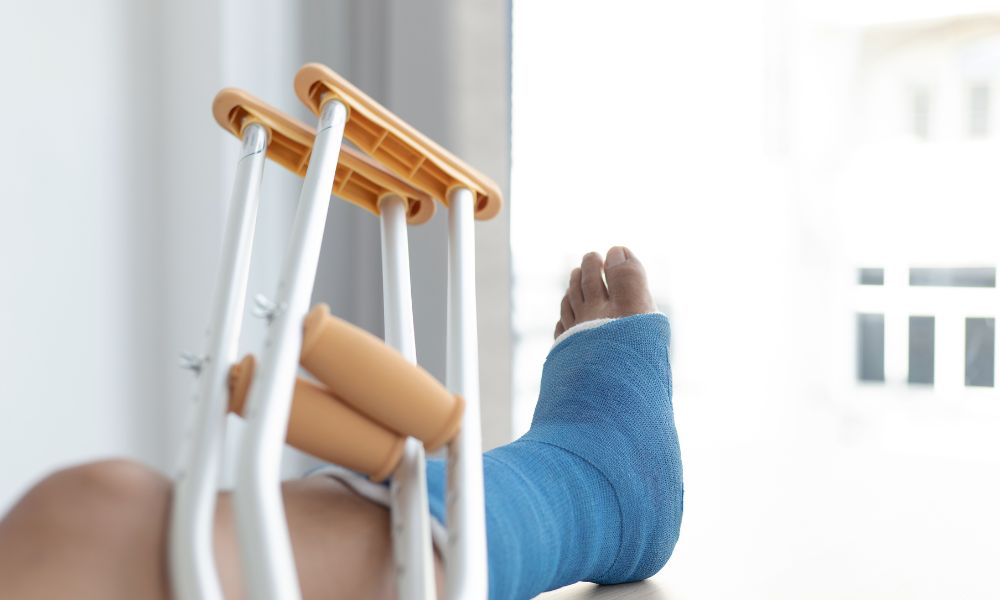Trusted Joint Fracture Treatment in Nagpur

Symptoms of joint fracture
When excessive pressure is applied to a bone beyond its capacity, it may either split or fracture. Any break, regardless of its size, is referred to as a fracture. If the fractured bone breaches the skin, it is classified as an open fracture, also known as a compound fracture.
A stress fracture occurs when a bone experiences repeated or prolonged stress, leading to a break. This continuous strain gradually weakens the bone until it ultimately succumbs to fracture.
Symptoms of a broken bone include:
- A misaligned or deformed limb or joint
- Swelling, discoloration, or hemorrhaging
- Severe discomfort
- Loss of sensation and tingling
- Open skin with exposed bone
- Restricted movement or an inability to use a limb or bear weight on the leg
Minimally Invasive Procedures for Joint Fracture Recovery
Minimally invasive orthopedic techniques involve making small incisions and using cutting-edge medical technology to reach and address the targeted area. Surgeons specializing in arthroscopy insert miniature cameras through these incisions, enabling visualization of the joint on a display screen. They also use specialized arthroscopic instruments that are sufficiently compact to be inserted through the incision sites.
In contrast, conventional open surgery necessitates larger incisions and more invasive methods. While this approach allows for enhanced access to the affected joint, it results in longer recovery periods and heightened pain for the patient. Furthermore, numerous individuals who undergo such invasive procedures often need physical therapy to restore their mobility and assist in managing pain.
Rehabilitation and Recovery after a Joint Fracture
Before delving into the rehabilitation process, it is essential to comprehend the events that occur during the recovery from a fracture. Upon the occurrence of a bone fracture, the body promptly initiates the healing process, which consists of three primary stages.:
- Inflammation: Blood clots develop at the location of the fracture, while the immune system dispatches cells to remove any debris.
- Repair: A new type of bone tissue, known as a callus, begins to form around the fracture.
- Remodeling: The callus solidifies and is progressively substituted by regular bone tissue.
The length of these stages varies based on factors such as the severity of the fracture, the age of the patient, their general health, and their compliance with the recovery plan.
Initial Treatment and Immobilisation
The initial phase of fracture recovery involves appropriate treatment measures, which may encompass:
- Reduction: Properly positioning the fractured ends of the bone
- Immobilization: Employing a cast, splint, or brace to stabilize the bone
- Surgery: In certain instances, orthopedic intervention may be required to mend the fracture
It is crucial during this stage to adhere to your physician’s guidance concerning rest, elevation, and medication in order to effectively manage pain and avert potential complications.
Nutrition for Optimal Healing
Proper nutrition is crucial for the recovery from fractures. To facilitate the healing process, it is advisable to consume a greater quantity of dairy products, leafy vegetables, and fortified foods to enhance calcium intake. Additionally, it is important to maintain sufficient levels of vitamin D through exposure to sunlight and, if needed, through dietary supplements. Consume protein-rich foods to support tissue repair. Stay hydrated to promote good circulation and overall health
Mental Health and Fracture Recovery
The psychological effects of a fracture are significant and should not be underestimated. Numerous patients encounter feelings of frustration, anxiety, or depression throughout their recovery journey. To support positive mental health:
- Establish realistic objectives and recognize minor achievements.
- Maintain communication with friends and family.
- Explore the option of participating in a support group for those recovering from fractures.
- Incorporate stress-relief practices, such as deep breathing exercises or meditation, into your routine.